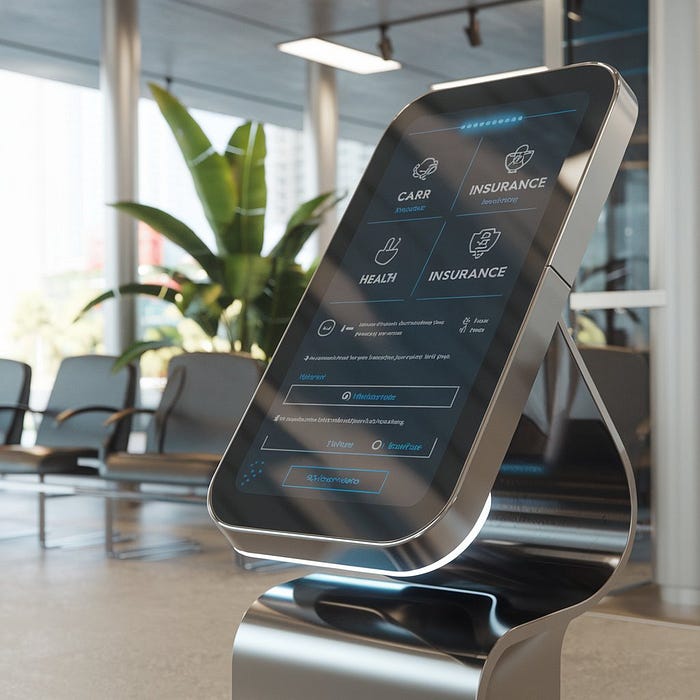Future Trends in Self-Service Insurance Machines

The Future of Self-Service Insurance Machines: Trends, Technologies, and Transformations
Self-service insurance machines are revolutionizing the way consumers interact with insurance providers. These machines, similar to ATMs or kiosks, allow users to access insurance services such as purchasing policies, filing claims, and receiving assistance — all without the need for in-person interaction. As technology evolves and customer expectations shift towards speed and convenience, the adoption of these machines is increasing globally. This blog explores how cutting-edge technologies are enhancing these systems, the expanding range of services they offer, the user experience innovations they bring, the challenges to overcome, and their overall impact on the insurance industry.
Integration of Advanced Technologies in Self-Service Insurance Machines
Artificial Intelligence and Machine Learning Enhancements
AI and ML are making self-service insurance machines significantly smarter. These technologies enable machines to:
- Analyze user data in real-time to offer personalized insurance recommendations.
- Automate claim processing, reducing the need for manual intervention.
- Detect fraud using behavioral analysis and anomaly detection.
- Predict future insurance needs based on user profiles and trends.
Biometric Authentication for Secure Access
Security is a top priority in insurance transactions. Biometric technologies such as:
- Facial recognition for identity verification.
- Fingerprint scanning for fast and secure logins.
- Voice recognition to access services hands-free.
These methods increase user trust and ensure that sensitive information is protected.
Internet of Things (IoT) Connectivity
IoT enhances self-service machines by connecting them with user devices and other systems. Key benefits include:
- Real-time data collection from smart devices (e.g., car sensors, health trackers).
- Instant policy adjustments based on current data.
- Automated claim initiation after a triggering event (e.g., accident detection).
Expansion of Capabilities and Services Provided by Insurance Machines
On-the-Spot Policy Customization and Purchases
Insurance machines are evolving to offer:
- Real-time quote generation based on user input.
- Policy tailoring based on specific needs (e.g., travel, health, vehicle).
- Instant policy issuance with digital copies sent via email or app.
Instant Claims Filing and Settlement
These machines are transforming the traditionally slow claims process by:
- Allowing users to scan documents or upload evidence directly.
- Using AI to assess damage or validate claims instantly.
- Processing payouts through digital wallets or bank transfers without delay.
Multi-Channel Integration with Digital Platforms
Customers expect seamless service across devices. Insurance machines now support:
- Synchronization with mobile apps and web portals.
- Data sharing between platforms for a unified experience.
- Notifications and reminders across channels for important updates.
User Experience Innovations in Self-Service Machines
Enhanced User Interfaces with Voice and Chatbot Support
User interfaces are becoming more intuitive with:
- Voice command features to simplify navigation.
- Chatbots for real-time assistance and query resolution.
- Dynamic UI adjustments based on user preferences and previous usage patterns.
Multilingual and Accessibility Features
To cater to a broader audience, machines now include:
- Support for multiple regional and international languages.
- Screen readers and audio support for visually impaired users.
- Adjustable interfaces for users with physical disabilities.

Personalized Recommendations Through Data Analytics
Machines now provide:
- Custom suggestions for add-on policies based on life stage or travel plans.
- Alerts on policy lapses or potential savings.
- Insights based on behavioral trends and peer comparisons.
Challenges and Considerations for Future Deployment
Data Privacy and Security Concerns
With increased data usage, risks also grow:
- Machines must comply with global privacy regulations like GDPR.
- Encryption and secure cloud storage are essential.
- Regular audits and security updates to prevent breaches.
Regulatory and Compliance Issues
Governments and insurance boards are adapting to new tech:
- Machines must adhere to financial and insurance compliance norms.
- Updates to regulations may affect service deployment.
- International expansion faces country-specific legal hurdles.
Addressing the Digital Divide and Customer Trust
To ensure broad adoption:
- Machines must be user-friendly even for those with limited tech exposure.
- Educational content and help options should be built in.
- Building brand trust through transparency and consistent service.
Market Impact and Industry Evolution Driven by Self-Service Insurance Machines
Cost Reduction and Efficiency Gains for Insurers
Benefits for insurance companies include:
- Reduced staffing needs in physical branches.
- Faster processing times for claims and policy issuance.
- Lower operational overhead and improved resource allocation.
Shifts in Customer Expectations and Behavior
Modern consumers demand:
- Instant service availability, even outside business hours.
- Transparency in policy options and pricing.
- Empowerment through self-service options and digital tools.
Future Outlook: Potential for Global Expansion and Innovation
Looking ahead:
- Emerging markets offer great potential for machine deployment.
- Continued AI development will lead to even smarter machines.
- Cross-industry partnerships (e.g., with healthcare, automotive) will expand utility.
Conclusion
Self-service insurance machines represent a major leap in how insurance services are delivered. With AI, biometrics, and IoT enhancing their functionality, and new capabilities streamlining customer journeys, these machines are set to become a mainstay in the industry. However, addressing challenges around security, regulation, and user inclusion will be key. As the technology matures and adoption spreads, insurers and customers alike stand to benefit from greater efficiency, personalization, and convenience. Stay tuned — this is just the beginning of a smart insurance revolution.
Comments
Post a Comment